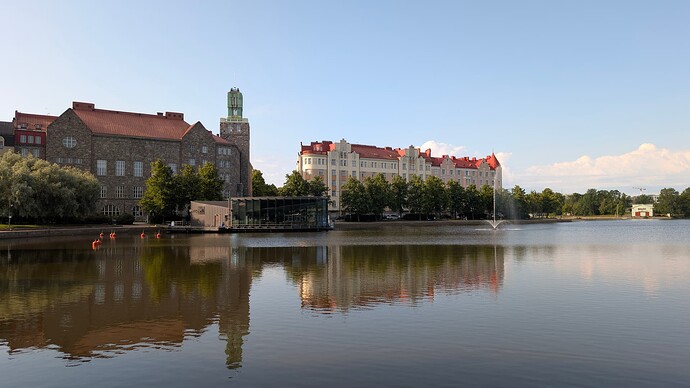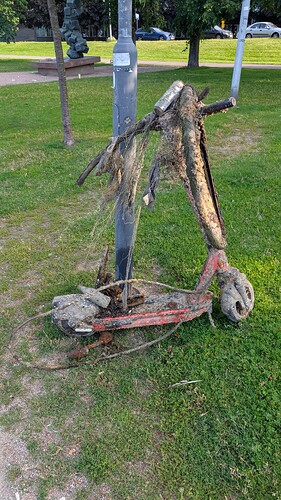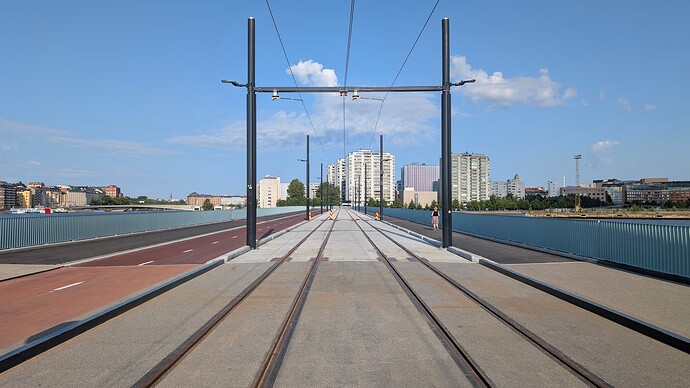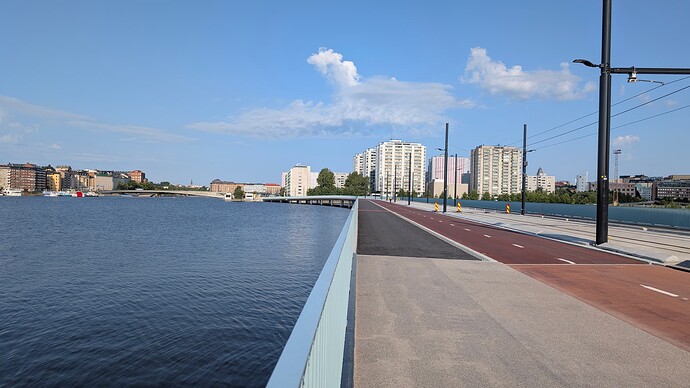To be honest going 50k anywhere I’d expect to hit main roads. It’s also an odd distance for public transport. If it’s not point to point for two towns I’d say you would struggle in a lot of places. It’s a hell of a commute.
This trip would involve walking a mile to a bus, taking a bus to the train station, travelling to downtown Chicago on the train, taking a bus to a different train station in Chicago (I’d actually walk this bit), taking a train to a nearby town, taking another bus, then walking a mile to my home. Actual travelled distance would be about 60km via public transportation. A lot of the 13 hours would be waiting for a train or bus to arrive.
Reminds me of the Twin Cities.
The jouney probably would have been a breeze before the Second World War.
Although this is about a single property, it covers the history of Atlantic City casino development fairly well:
In the video comments, someone mentioned that the rise of gaming in Pennsylvania really undermined the casino industry in New Jersey. This lays out some of the challenges faced by planners in Bethlehem, PA…
…however, it doesn’t address how the residents of AC were promised the moon and given green government cheese. Here’s an annual report from 2023 (the 45th anniversary of legalized gaming in the state) that sheds some light on where the money really goes (excerpt below).
In the 45 years since that day, the casinos have continued to realize the promise of
legalized gaming—to provide funds for critical programs that benefit New Jersey’s senior and
disabled citizens. As of this year, the casinos collectively have contributed more than $12
billion to address important needs in every county, including pharmaceutical aid, hearing aid
assistance, personal assistance programs, transportation, and vocational rehabilitation. In fiscal
2023 alone, casinos paid more than $493 million in gaming-related taxes and fees.Legalized gaming also came with a commitment to restore the convention, tourism, entertainment, and cultural centers in Atlantic City, and to attract new investment capital to New Jersey
in general and to Atlantic City in particular. Since 1978, the casino hotels have invested $19.4 billion toward construction and capital improvements.
Nothing is mentioned about areas of the city where the residents live, of course. Casinos mostly invest in themselves. The AC population is on the low end among cities in the state*. Like elsewhere in the state, efforts to revitalize or increase affordable housing lead to ugly fights and an inadequate number of units actually built. Most industry (or supporting enterprise) workers come from outside and spend most of their earnings where they live. So, the city continues to struggle, local pols fight over the scraps left by the state, and the public declares the entire area is a mess - without understanding that it is very much by design that the city remains that way.
*The definition of a city in New Jersey has changed since the late '80s. BITD there were only 11, but under the new definition there are 52. To see them, first sort the list in the linked article by Type, and then scroll past all of the boroughs to get an idea of how small the population of Atlantic City is in comparison with the rest. Unfortunately, trying to find a list by population that didn’t include other types of municipalities that are not cities was such a pain that I gave up. ![]()
I just want to add a bit of caution regarding the idealistic plans in Bhutan. I was there in the 1980s when they were building their first road through the country and putting in electricity (but at that point only in the capital city of Thimphu). Tibetans were streaming over the border to escape the Chinese taking over their country…and ‘streaming over border’ there means climbing over the Himalayas to get to the other side. Bhutan got its version of Buddhism from the Tibetans, so the communication between the countries has a long history, despite the topography.
Tibetan refugees were put to work: women and children made gravel (banging chisels on rocks on the sides of the mountains) and the men were first made to be butchers (Tibetan Buddhism says it’s the person who kills the animal who incurs the bad karma, not the person who eats it) and the rest to do physical labor on the new road and electrical lines.
I have to assume this new anti-Dubai metropolis will in fact be built largely by Tibetan refugees, not the King’s children and other native Bhutanese as suggested in the video. The place sounds like Shangri-La from the outside, but it’s filled with humans just like every country, with the attendant issues.
Thanks for that historical context!
By and large, things seem to be moving in a better direction since the 2008 constitution, but there is still a lot to do. Some of the regulations stemming from the 1958 citizenship act 1985 and the 2007 immigration act are still in effect despite being inconsistent with the 2008 constitution. The Tibetans are still in legal limbo and then there are the Lhotshampa1)… And so on.
Still, a far cry from the ethnic cleansings in the early 1990ies (or so it seems) and the times are changing. I’m cautiously optimistic, and it’s good to see something proposed that isn’t megalomania on amphetamines like, say The Line for a change.
1) Whose North American diaspora is being shafted by the Trump administration right now. More people to deport to fill the quota, yay. This should be the cue for Bhutan, Nepal and India to sit down over a nice cup of tea and finally work something out, but… Well, you know.
good video.
almost everything I know about Atlantic City is due to the eponymous Louis Malle movie.
your post’s description actually does line up with this movie’s depiction of 80s AC somewhat, as some of the film has to do with the locals’ status as second class citizens. this is represented by Burt Lancaster, a Greatest Generation holdout who grew up adjacent to the mafia scene only to wind up as a low-rent never-was who runs numbers to the ghettoized current generation of locals.
it’s a great movie, and even funny at times. the scene with Bob Goulet is hilarious but it’s not on youtube unfortunately
What a coincidence! I just watched this video on the same subject, but with a different perspective. It’s more like, “Tales of City Trams, Streetcars, and Trolleys” (the good, the bad, and the ugly in various cities with a focus on issues in Toronto that might be similar to transport problems in other major metro areas):
when I first found out that there was a tram in Prague with a webcam (a service tram that travels the entire network) I became so obsessed that I actually learned the layout of the city (with consultation of the live map, too.)
in December they even had a Christmas tree on it with lights that users of the old website could control the colors and blinking. it’s just on YouTube Livestream now. in the US there’s a lot of downtime because of the time change but as of this posting it’s running
edit: I don’t think this “livestream” is live. the timecode in the corner is off by 5hr and 7min by my calculation. but you still get to see a recording of Prague, anyway.
The soundtrack is strangely soothing too.
…when crews tore up a stretch of Lincoln Avenue, they unearthed a remnant of an old streetcar line, which had been buried under asphalt for decades.
These newly exposed tracks and rail ties were part of what was once one of the world’s largest streetcar systems. For reference, picture San Francisco’s cable cars or the trams that run in many European cities.
A group of private companies operated the streetcar routes, which covered hundreds of miles as they criss-crossed the city (and even into the suburbs), carrying riders to work, school, shops and everywhere in between.
All for as little as a nickel fare.
So what happened to the streetcars?
Well, because this is Chicago, politics and corruption definitely played a role in the system’s demise. But so did financial woes.
We have that in Chicago and it’s excellent. I find when I go to other cities where they don’t have it, it feels so wrong now.








